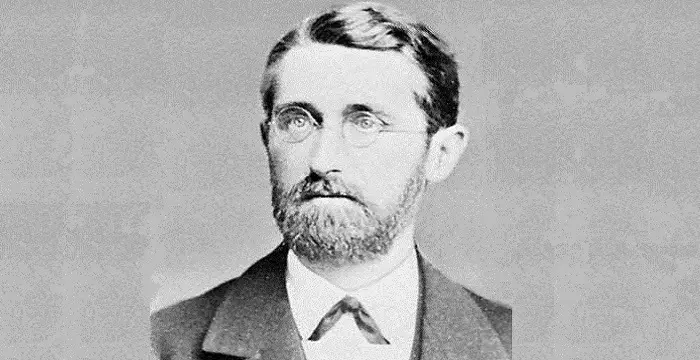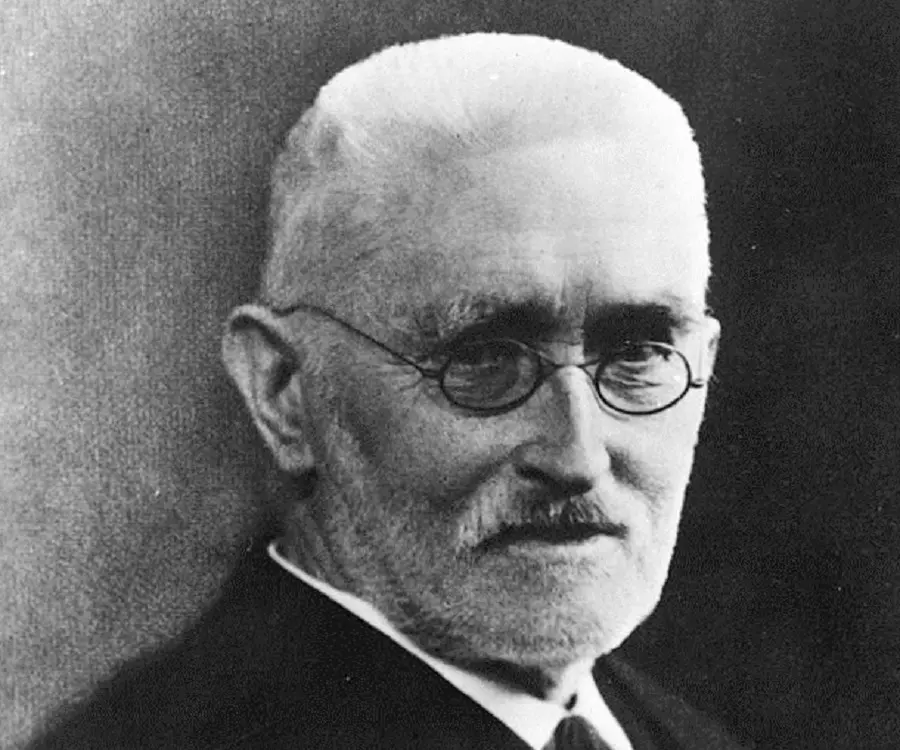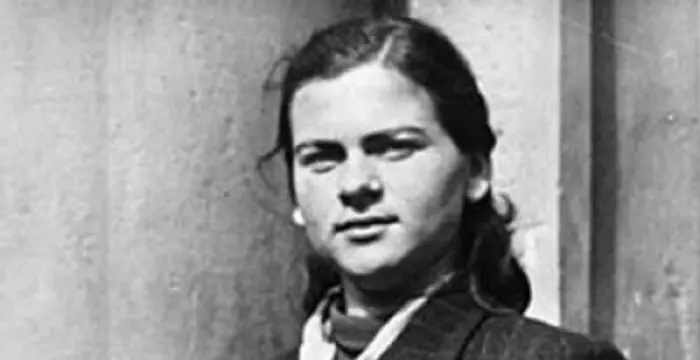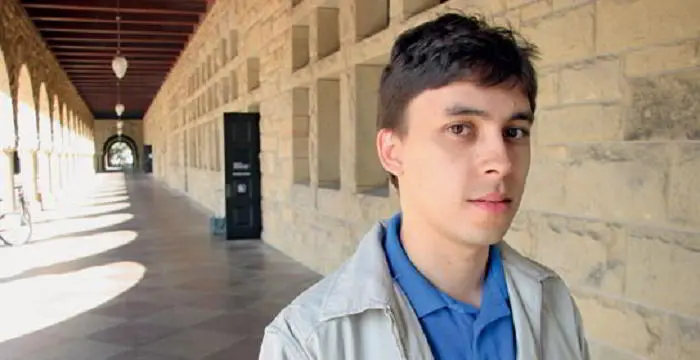
Richard Dedekind - Mathematicians, Career and Family
Richard Dedekind's Personal Details
Richard Dedekind was a German mathematician famous for his contributions to abstract algebra
| Information | Detail |
|---|---|
| Birthday | October 6, 1831 |
| Died on | February 12, 1916 |
| Nationality | German |
| Famous | Scientists, Mathematicians |
| Siblings | Julia |
| Birth Place | Braunschweig, Germany |
| Gender | Male |
| Father | Julius Levin Ulrich Dedekind |
| Mother | Caroline Marie Hanriette Emperius |
| Sun Sign | Libra |
| Born in | Braunschweig, Germany |
| Famous as | Mathematician |
| Died at Age | 84 |
// Famous Mathematicians
Grigori Perelman
Grigori Perelman is a Russian mathematician who is best known for his contributions to Riemannian geometry and geometric topology. Check out this biography to know about his childhood, family life, achievements and fun facts about him.
Terence Tao
Terence Tao is an Australian- American mathematician who has contributed enormously to the field of mathematics. Check out this biography to know about his childhood, family life and achievements.
Isaac Newton
Isaac Newton was an English scientist and mathematician, who discovered gravitation and Newtonian Mechanics. Read this biography to find more on his life.
Richard Dedekind's photo
Who is Richard Dedekind?
Richard Dedekind was a German mathematician who became famous for his contributions to the field of abstract algebra,especially the algebraic theory for numbers, the ring theory, and the foundation of real numbers. During the course of his illustrious career he wrote a paper in which he described ‘what numbers actually are and what they should be’. He suggested an analysis of the number theory and defined an infinite set of numbers. Most of his life was spent in Braunschweig where he taught mathematics. Along with his own mathematical works such as formulating the ‘Dedekind’s Theorem’ he also edited the various works of Bernhard Riemann, Carl Gauss and Peter Dirichlet. One of his most notable contributions to the field of mathematics was editing the collection of works carried out by Riemann, Dirichlet and Gauss and publishing them in a single volume. Dedekind was brilliant in not only creating concepts and formulating theories but he was also able to express his ideas concisely and clearly which led to their easy acceptance. His analysis of infinite and real numbers was not given full recognition while he was still alive but became one of the major influences on the field of modern mathematics after his death.
// Famous Scientists
Juliane Koepcke
Juliane Koepcke is a German-Peruvian biologist, who was the lone survivor among the 92 passengers and crew of the ill-fated LANSA Flight 508 that crashed in the Peruvian rainforest on 24 December 1971. Know more about her life in this biography.
Henry Cavendish
Henry Cavendish was a theoretical chemist and physicist, renowned for discovery of hydrogen and calculation of the mass of earth. To know more about his childhood, profile, timeline and career read on
Konstantin Tsiolkovsky
Konstantin Tsiolkovsky was a Russian rocket scientist and a pioneer of astronautics. This biography provides detailed information about his childhood, family, personal life, career, achievements, etc.
Childhood & Early Life
Richard Dedekind was born as Julius Wilhelm Richard Dedekind in Braunschweig, a city in northern Germany on October 6, 1831. He never used the names ‘Julius’ and ‘Wilhelm’ when he grew up. He was born, spent the greater part of his life, and ultimately died in Braunschweig, which is sometimes called Brunswick in English.
His father was a lawyer named Julius Levin Ulrich Dedekind who worked as an administrator for the ‘Collegium Carolinum’ at Braunschweig which was a cross between a high school and university.
His mother was Caroline Mare Henriette Emperius, the daughter of a professor who also worked at the ‘Collegium Carolinum’.
Richardwas the youngest of the four children in the Dedekind family and had an elder sister named Julia with whom he lived for the major part of his life. Just like Richard would, she also remained unmarried throughout her life.
He did not have any great interest in mathematics while he was studying from 1838 to 1847 at the school named ‘Gymnasium Martino-Catharineum’ in Braunschweig and found the subjects of physics and chemistry illogical and quite boring.
Though physics and chemistry were the main subjects that he had to study, his lack of interest in them made him take up mathematics as the only subject worth studying and turned to algebra, calculus and analytic geometry while studying at the ‘Collegium Carolinum’in Braunschweig from 1848 to 1850. His years at the ‘Collegium Carolinum’ provided a solid mathematical base which helped him later.
In 1850 he entered the ‘University of Gottingen’ to study mathematics under MoritzA. Stern, G. Ulrich and Carl Friedrich Gauss. He studied ‘number theory’ under Stern and elementary mathematics under Gauss as his last student. He completed his doctoral work under Gauss’s supervision within a period of four semesters and received his doctorate degree from this university in 1852, for the thesis ‘Uber die Theorie der Eulerschen Integrate’ or ‘On the Theory of Eulerian Integrals’.
As most of the research on mathematical problems was carried out at the ‘University of Berlin’ and not the ‘University of Gottingen’, Dedekind went to Berlin and studied in the university for two years. During that period Bernhard Riemann was his contemporary and both of them received ‘habilitation’ in 1854 from the ‘University of Berlin’.
Career
Richard Dedekind started his career by serving as a ‘Privatdozent’ or ‘unsalaried lecturer’ at the ‘University of Gottingen’ and taught geometry and probability there from 1854 to 1858. While there he became good friends with Peter Gustav Lejeune Dirichlet and studied abelian and elliptic functions as he wanted to strengthen the mathematical knowledge he had.
When Dirichlet was appointed to fill the chair after Gauss died in 1855, Dedekind found that working under him was extremely useful. He attended the lectures on potential theory, theory of numbers, definite integrals and partial differential equations given by Dirichlet and soon became friends with him. His interest in mathematics got a fresh lease of life after carrying out various discussions with Dirichlet.
In 1856 Dedekind became the first person to give a lecture on ‘Galois Theory’ during a course on mathematics that he gave at Gottingen after studying the works of Galois.
In 1858 he became a mathematics teacher at the Polytechnic school in Zurich, later known as ETH Zurich, and taught there for the next five years as a salaried teacher. During this period he derived the concept of the ‘Dedekind Cut or Schnitt’ which has become the standard for defining real numbersand describes how rational numbers are divided into two sets by an irrational number.
In September 1859, Dedekind visited Berlin with Riemann when Riemann was elected to the ‘Berlin Academy of Sciences’ where he met other famous mathematicians including Borchardt, Kummer, Wierstrass and Kronecker.
He returned to Braunschweig in 1862 and took up the job of teaching mathematics at the Technische Hochschule which had been known as ‘Collegium Carolinum’till 1860 and had recently been upgraded.He spent the later part of his career teaching mathematics at this school.
In 1863 he published the lectures given by Dirichlet on the number theory, in the form of a book. His study of the work done by Dirichlet helped him in his studies of the number fields in algebra later.
In 1872 he developed the analysis of irrational numbers and even published a book on his findings.
In 1872 he met Georg Cantor, a fellow mathematician, in the city of Interlaken while holidaying in the Black Forest in Germany. They shared their ideas and agreed to start working together on the set theory which helped Cantor to resolve the disputes he had with Leopold Kronecker who was an opponent of ‘transfinite numbers’ suggested by Cantor. Dedekind and Cantor maintained ties with each other for a long time afterwards.
In 1882 he collaborated with Heinrich Martin Weber to put forward an algebraic proof of the ‘Riemann-Roch Theorem’.
He came out with the short essay ‘Was sind und was sollen die Zahlen’ or ‘What are numbers and what should they be?’ in 1888 which described what an ‘infinite set’ means. In this monograph he suggested that natural numbers had their foundation on axioms, which was verified by Giuseppe Peano who created a set of simpler but equivalent axioms the next year.
Dedekind taught mathematics at the ‘Technische Hochschule’ in Braunschweig till 1894 when he retired from active teaching.
Even after retirement, he kept on writing and publishing various works in the field of mathematics and also took classes occasionally.He published his works on the modular lattices found in algebra in 1900.
Major Works
Richard Dedekind published the book ‘’ Vorlesungen über Zahlentheorie’ or ‘Lectures on Number Theory’ in German in 1863 which contained the lectures given by Dirichlet earlier on the subject. The third and fourth editions of this book were published in 1879 and 1894 respectively in which supplements written by Dedekind introduced a notion of groups for arithmetic and algebra which became fundamental to the ring theory. Though the word ‘ring’ was not originally mentioned by Dedekind, it was included later by Hilbert.
He wrote the book ‘Stetigkeit und Irrationale Zahlen’ or ‘Continuity and Irrational Numbers’ in 1872 which made him quite famous in the world of mathematics.
In 1882 he published a paper which he had prepared jointly with Heinrich Weber in which he analyzed the ‘theory of Riemann surfaces’ which proved the ‘Riemann-Roch Theorem’ algebraically.
Awards & Achievements
Richard Dedekind was elected to the ‘Gottingen Academy’ in 1862, the ‘Berlin Academy’ in 1880, and the ‘Academy of Rome’, the ‘Leopoldino-Carolina Naturae Curiosorum Academia’ and the ‘Academie des Sciences’ in Paris in 1900.
The ‘Kristiania University’ in Oslo, the ‘Zurich University ‘and the ‘University of Braunschweig’ awarded him honorary doctorate degrees.
Personal Life & Legacy
Richard Dedekind remained unmarried and lived at Braunschweig with his unmarried sister Julia.
Throughout his life Dedekind enjoyed good health. The only time that he was seriously ill was during the time his father died which was ten years after he had joined the ‘Technische Hochschule’. He recovered completely from the illness and was never sick again.
He died of natural causes at the age of 84 on February 12, 1916 in his home town Braunschweig, Germany.
Trivia
Richard Dedekind loved to go on holidays to the Black Forests of Germany, the Austrian Tyrol and Switzerland.
// Famous Libra Celebrities peoples
Melissa Brim
Melissa Brim is the ex-girlfriend of former professional boxer Floyd Mayweather Jr. Check out this biography to know about her birthday, childhood, family life, achievements and fun facts about her.
Jacob Tremblay
Jacob Tremblay is a Canadian child actor. Let’s have a look at his family & personal life including age, birthday, relationships, net worth and fun facts.
Sierra Furtado
Check out all that you wanted to know about Sierra Furtado, the famous YouTube Personality; her birthday, her family and personal life, her boyfriend, fun trivia facts and more.
Richard Dedekind biography timelines
- // 6th Oct 1831Richard Dedekind was born as Julius Wilhelm Richard Dedekind in Braunschweig, a city in northern Germany on October 6, 1831. He never used the names ‘Julius’ and ‘Wilhelm’ when he grew up. He was born, spent the greater part of his life, and ultimately died in Braunschweig, which is sometimes called Brunswick in English.
- // 1838He did not have any great interest in mathematics while he was studying from 1838 to 1847 at the school named ‘Gymnasium Martino-Catharineum’ in Braunschweig and found the subjects of physics and chemistry illogical and quite boring.
- // 1848 To 1850Though physics and chemistry were the main subjects that he had to study, his lack of interest in them made him take up mathematics as the only subject worth studying and turned to algebra, calculus and analytic geometry while studying at the ‘Collegium Carolinum’in Braunschweig from 1848 to 1850. His years at the ‘Collegium Carolinum’ provided a solid mathematical base which helped him later.
- // 1850 To 1852In 1850 he entered the ‘University of Gottingen’ to study mathematics under MoritzA. Stern, G. Ulrich and Carl Friedrich Gauss. He studied ‘number theory’ under Stern and elementary mathematics under Gauss as his last student. He completed his doctoral work under Gauss’s supervision within a period of four semesters and received his doctorate degree from this university in 1852, for the thesis ‘Uber die Theorie der Eulerschen Integrate’ or ‘On the Theory of Eulerian Integrals’.
- // 1854As most of the research on mathematical problems was carried out at the ‘University of Berlin’ and not the ‘University of Gottingen’, Dedekind went to Berlin and studied in the university for two years. During that period Bernhard Riemann was his contemporary and both of them received ‘habilitation’ in 1854 from the ‘University of Berlin’.
- // 1854 To 1858Richard Dedekind started his career by serving as a ‘Privatdozent’ or ‘unsalaried lecturer’ at the ‘University of Gottingen’ and taught geometry and probability there from 1854 to 1858. While there he became good friends with Peter Gustav Lejeune Dirichlet and studied abelian and elliptic functions as he wanted to strengthen the mathematical knowledge he had.
- // 1855When Dirichlet was appointed to fill the chair after Gauss died in 1855, Dedekind found that working under him was extremely useful. He attended the lectures on potential theory, theory of numbers, definite integrals and partial differential equations given by Dirichlet and soon became friends with him. His interest in mathematics got a fresh lease of life after carrying out various discussions with Dirichlet.
- // 1856In 1856 Dedekind became the first person to give a lecture on ‘Galois Theory’ during a course on mathematics that he gave at Gottingen after studying the works of Galois.
- // 1858In 1858 he became a mathematics teacher at the Polytechnic school in Zurich, later known as ETH Zurich, and taught there for the next five years as a salaried teacher. During this period he derived the concept of the ‘Dedekind Cut or Schnitt’ which has become the standard for defining real numbersand describes how rational numbers are divided into two sets by an irrational number.
- // Sep 1859In September 1859, Dedekind visited Berlin with Riemann when Riemann was elected to the ‘Berlin Academy of Sciences’ where he met other famous mathematicians including Borchardt, Kummer, Wierstrass and Kronecker.
- // 1860 To 1862He returned to Braunschweig in 1862 and took up the job of teaching mathematics at the Technische Hochschule which had been known as ‘Collegium Carolinum’till 1860 and had recently been upgraded.He spent the later part of his career teaching mathematics at this school.
- // 1863In 1863 he published the lectures given by Dirichlet on the number theory, in the form of a book. His study of the work done by Dirichlet helped him in his studies of the number fields in algebra later.
- // 1872In 1872 he developed the analysis of irrational numbers and even published a book on his findings.
- // 1872In 1872 he met Georg Cantor, a fellow mathematician, in the city of Interlaken while holidaying in the Black Forest in Germany. They shared their ideas and agreed to start working together on the set theory which helped Cantor to resolve the disputes he had with Leopold Kronecker who was an opponent of ‘transfinite numbers’ suggested by Cantor. Dedekind and Cantor maintained ties with each other for a long time afterwards.
- // 1872He wrote the book ‘Stetigkeit und Irrationale Zahlen’ or ‘Continuity and Irrational Numbers’ in 1872 which made him quite famous in the world of mathematics.
- // 1882In 1882 he collaborated with Heinrich Martin Weber to put forward an algebraic proof of the ‘Riemann-Roch Theorem’.
- // 1882In 1882 he published a paper which he had prepared jointly with Heinrich Weber in which he analyzed the ‘theory of Riemann surfaces’ which proved the ‘Riemann-Roch Theorem’ algebraically.
- // 1888He came out with the short essay ‘Was sind und was sollen die Zahlen’ or ‘What are numbers and what should they be?’ in 1888 which described what an ‘infinite set’ means. In this monograph he suggested that natural numbers had their foundation on axioms, which was verified by Giuseppe Peano who created a set of simpler but equivalent axioms the next year.
- // 1894Dedekind taught mathematics at the ‘Technische Hochschule’ in Braunschweig till 1894 when he retired from active teaching.
- // 1900Even after retirement, he kept on writing and publishing various works in the field of mathematics and also took classes occasionally.He published his works on the modular lattices found in algebra in 1900.
- // 12th Feb 1916He died of natural causes at the age of 84 on February 12, 1916 in his home town Braunschweig, Germany.
// Famous German peoples
Jordan Carver
Jordan Carver is a famous German model. Let’s take a close look at her personal life, including her age, career, net worth, achievements and some fun facts.
Jürgen Klopp
Jürgen Klopp is a German football manager, and a former professional football player. Check out this biography to know more about his childhood, family, personal life, etc.
Irma Grese
Irma Grese was a notorious German Nazi concentration camp guard during the Second World War. This biography profiles her childhood, life, horrifying acts, death and other facts.
Juliane Koepcke
Juliane Koepcke is a German-Peruvian biologist, who was the lone survivor among the 92 passengers and crew of the ill-fated LANSA Flight 508 that crashed in the Peruvian rainforest on 24 December 1971. Know more about her life in this biography.
Jawed Karim
Jawed Karim is a German-American internet entrepreneur, technologist and co-founder of the video-sharing website, YouTube. Check out this biography to know about his childhood, family, personal life, achievements, age, etc.
Charles Bukowski
Charles Bukowski was a German-born American novelist, short story writer and poet. With this biography, learn in details about his childhood, life, works, career and timeline
Richard Dedekind's FAQ
What is Richard Dedekind birthday?
Richard Dedekind was born at 1831-10-06
When was Richard Dedekind died?
Richard Dedekind was died at 1916-02-12
Where was Richard Dedekind died?
Richard Dedekind was died in Braunschweig, German Empire
Which age was Richard Dedekind died?
Richard Dedekind was died at age 84
Where is Richard Dedekind's birth place?
Richard Dedekind was born in Braunschweig, Germany
What is Richard Dedekind nationalities?
Richard Dedekind's nationalities is German
Who is Richard Dedekind siblings?
Richard Dedekind's siblings is Julia
Who is Richard Dedekind's father?
Richard Dedekind's father is Julius Levin Ulrich Dedekind
Who is Richard Dedekind's mother?
Richard Dedekind's mother is Caroline Marie Hanriette Emperius
What is Richard Dedekind's sun sign?
Richard Dedekind is Libra
How famous is Richard Dedekind?
Richard Dedekind is famouse as Mathematician















